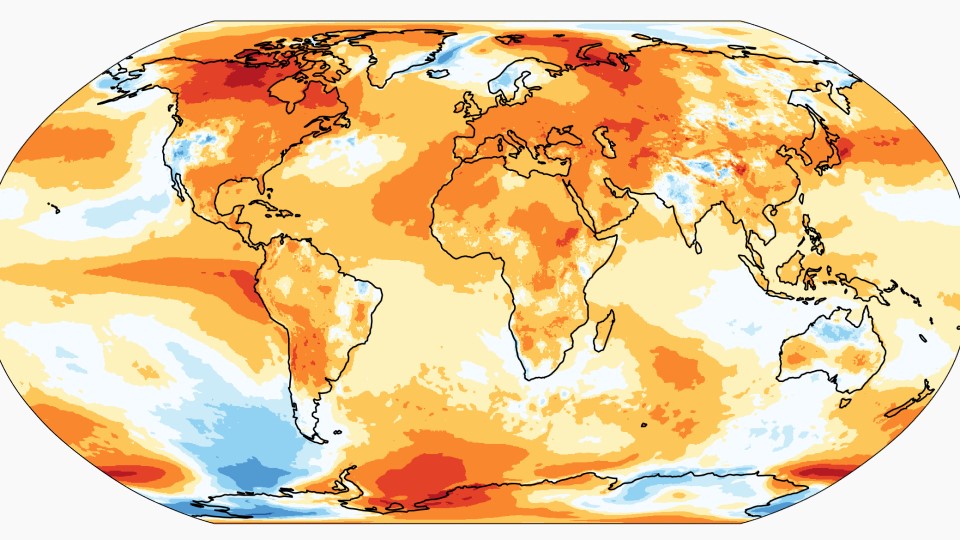Weather service reports almost 1.5 degrees of warming for 2023

The planet’s temperature continues to rise. As a result, temperature records are being broken, one after the next. According to the EU Copernicus Climate Change Service, the rise in average global temperatures remained barely underneath the 1.5-degree threshold. The average was 1.48 degrees Celsius higher than the average between 1850 and 1900 as Copernicus published in their report, Global Climate Highlights 2023, on Tuesday.
“Temperatures during 2023 likely exceed those of any period in at least the last 100,000 years,” said Samantha Burgess, Deputy Director of the Copernicus Climate Change Service (C3S). Climate researchers can indirectly reconstruct the historic climate using tree rings or bubbles in glaciers.
Copernicus already predicted that the year would be the warmest since the first records in 1850. This now means that it is probable that a 12-month period which ends in January or February will exceed the 1.5-degree threshold.
Experts consider it entirely possible that 2024 will be even warmer and the average increase of temperature may be over 1.5 degrees for the first time ever. However, the agreed upon 1.5-degree goal would (still) not be failed as long-term average values are evaluated.
However, the UN Environment Programme already warned at the end of November 2023 that CO2 emissions would need to be reduced by 42 percent more than the planned amount until 2030 in order to meet the Paris goals. Considering ongoing rising emissions, it seems like an unlikely scenario.
Every day is too hot
According to Copernicus, the global average temperature in 2023 was 14.98 degrees Celsius, being 0.17 degrees higher than in the previous record year of 2016. For the first time, every day this past year was at least one degree above pre-industrial levels – two days in November were even more than two degrees.
From June to December, each month was warmer than the previously measured record value for each month. Europe experienced the second warmest year since the beginning of records.
Ocean warming
"A critical driver of the unusual air temperatures experienced throughout 2023 were the unprecedented high surface temperatures in the ocean," according to Copernicus.
Throughout August 2023, the ocean surface temperature was 21.1 degrees on a global level for several weeks – this amount was never reached in 40 years of recorded temperatures until 2022. However, the oceans had already been exceptionally warm since April. The main reason for the warm oceans is the continuing rise of greenhouse gas concentration in the atmosphere.
Another factor is the recurring weather phenomenon, El Niño, which returned this past year.
“Era of climate instability”
“The extremes we have observed over the last few months provide a dramatic testimony of how far we now are from the climate in which our civilisation developed,” said Carlo Buontempo, Director of the Copernicus Climate Change Service. He called for advances in the decarbonization of the economy.
The human rights organisation, Amnesty International, reacted to the Copernicus report with a warning against its “serious consequences for human rights.” Humanity has now reached a worrying era of climate instability in which catastrophes like heat waves and droughts as well as intense rainfall and storms occur frequently – with disastrous effects for the environment, bio diversity and marginalised groups.
“Within eight years of the Paris climate agreement being signed, the 1.5 degrees Celsius rise in global temperatures this century it incorporated as a buffer against the worst impacts of climate change has been all but used up,” Amnesty warned on Tuesday.
The Copernicus Climate Change Service of the European Union regularly publishes data about the Earth’s surface temperature, Arctic sea ice and precipitation. The results are found using computer-generated analysis in which billions of measurements from satellites, ships, air crafts and weather stations are incorporated from all over the world. (dpa / hcz)